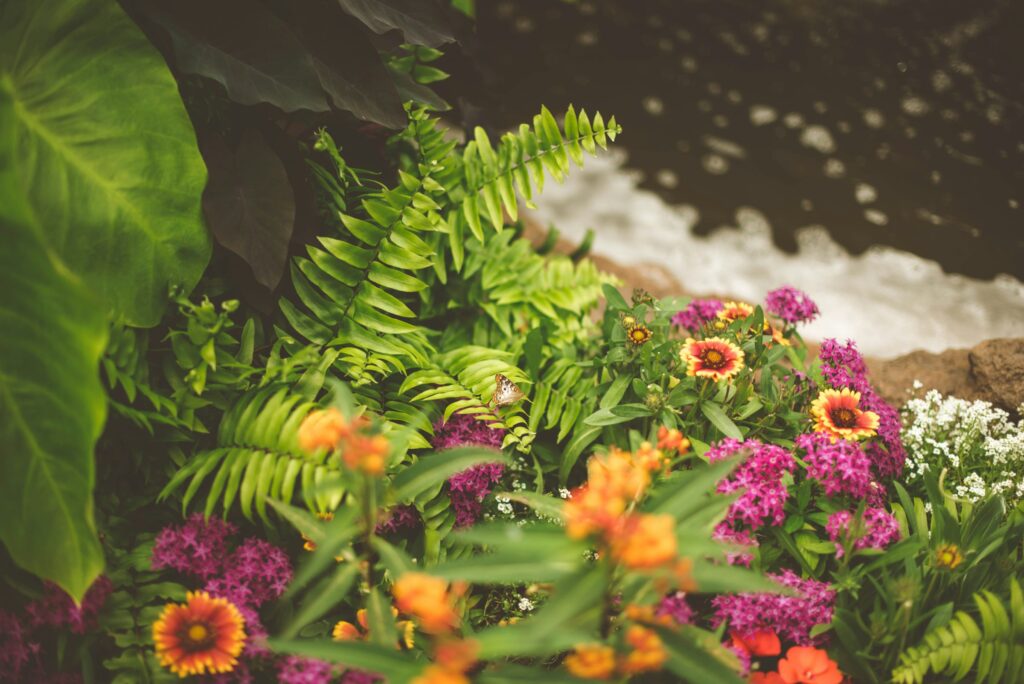In recent years, there has been a delightful shift in landscaping practices towards incorporating edible plants into outdoor spaces. Gone are the days when gardens were solely ornamental; now, they serve as both a feast for the eyes and a source of nourishment for the body. This harmonious blend of beauty and functionality is at the heart of landscaping with edible plants, where every leaf, flower, and fruit not only adds visual appeal but also offers a delicious bounty. Let’s delve into the art of creating landscapes that are as pleasing to the palate as they are to the eye.

The Rise of Edible Landscaping
Traditionally, gardens were divided into separate zones: ornamental beds for flowers and shrubs, and vegetable patches tucked away in the backyard. However, the concept of edible landscaping challenges this division by seamlessly integrating fruit-bearing trees, bushes, and herbs with ornamental plants. This trend has gained momentum as people seek to maximize the use of their outdoor spaces while embracing sustainable living practices.
Designing with Purpose
When it comes to landscaping with edible plants, thoughtful design is key. Begin by assessing the layout of your outdoor space and envisioning how different edible elements can be incorporated. Consider mixing fruit trees such as apple, cherry, and fig with flowering shrubs like lavender and rosemary to create a visually dynamic landscape. Integrate edible herbs such as basil, thyme, and mint into borders or containers for added texture and fragrance.
Creating Visual Harmony
One of the challenges of edible landscaping is achieving a balance between aesthetics and functionality. However, with careful planning, it’s possible to create a landscape that is both visually appealing and productive. Incorporate edible plants with varying heights, colors, and textures to add interest and dimension to your garden beds. Mix leafy greens like kale and Swiss chard with colorful peppers and tomatoes for a vibrant display of both foliage and fruit.
Maximizing Space
Even if you have limited outdoor space, you can still embrace edible landscaping by thinking creatively about vertical and container gardening. Utilize trellises or arbors to grow climbing plants such as beans, cucumbers, and peas, which not only save space but also add vertical interest to your landscape. Additionally, explore the possibilities of container gardening by planting herbs, strawberries, and even dwarf fruit trees in pots or raised beds.
Practical Considerations
While aesthetics are important, it’s also essential to consider the practical aspects of maintaining an edible landscape. Choose plants that are well-suited to your climate and soil conditions to ensure their long-term health and productivity. Incorporate edible plants that are low-maintenance and disease-resistant to minimize the need for chemical inputs. Additionally, be mindful of spacing and sunlight requirements to optimize growth and yield.
Harvesting the Bounty
One of the most rewarding aspects of landscaping with edible plants is the opportunity to enjoy a bountiful harvest of fresh, homegrown produce. As your edible landscape matures, you’ll be able to harvest a diverse array of fruits, vegetables, and herbs throughout the growing season. Whether it’s plucking ripe berries straight from the vine or snipping fragrant herbs for culinary creations, there’s a special joy in harvesting food from your own backyard.
Embracing Seasonality
Another benefit of landscaping with edible plants is the opportunity to embrace the rhythm of the seasons. From the first tender shoots of spring to the last harvest of autumn, each season brings its own delights and challenges. Plan your edible landscape to include a mix of early, mid, and late-season crops to ensure a continuous supply of fresh produce throughout the year. Additionally, consider preserving surplus harvests through methods such as canning, freezing, or drying to enjoy your homegrown bounty year-round.
In conclusion, landscaping with edible plants offers a unique opportunity to merge beauty and functionality in outdoor spaces. By thoughtfully integrating fruit trees, bushes, herbs, and vegetables into your landscape design, you can create a visually stunning garden that also provides a sustainable source of fresh, homegrown produce. Whether you have a sprawling backyard or a small urban balcony, there are endless possibilities for incorporating edible plants into your landscape and reaping the rewards of a fruitful harvest.
